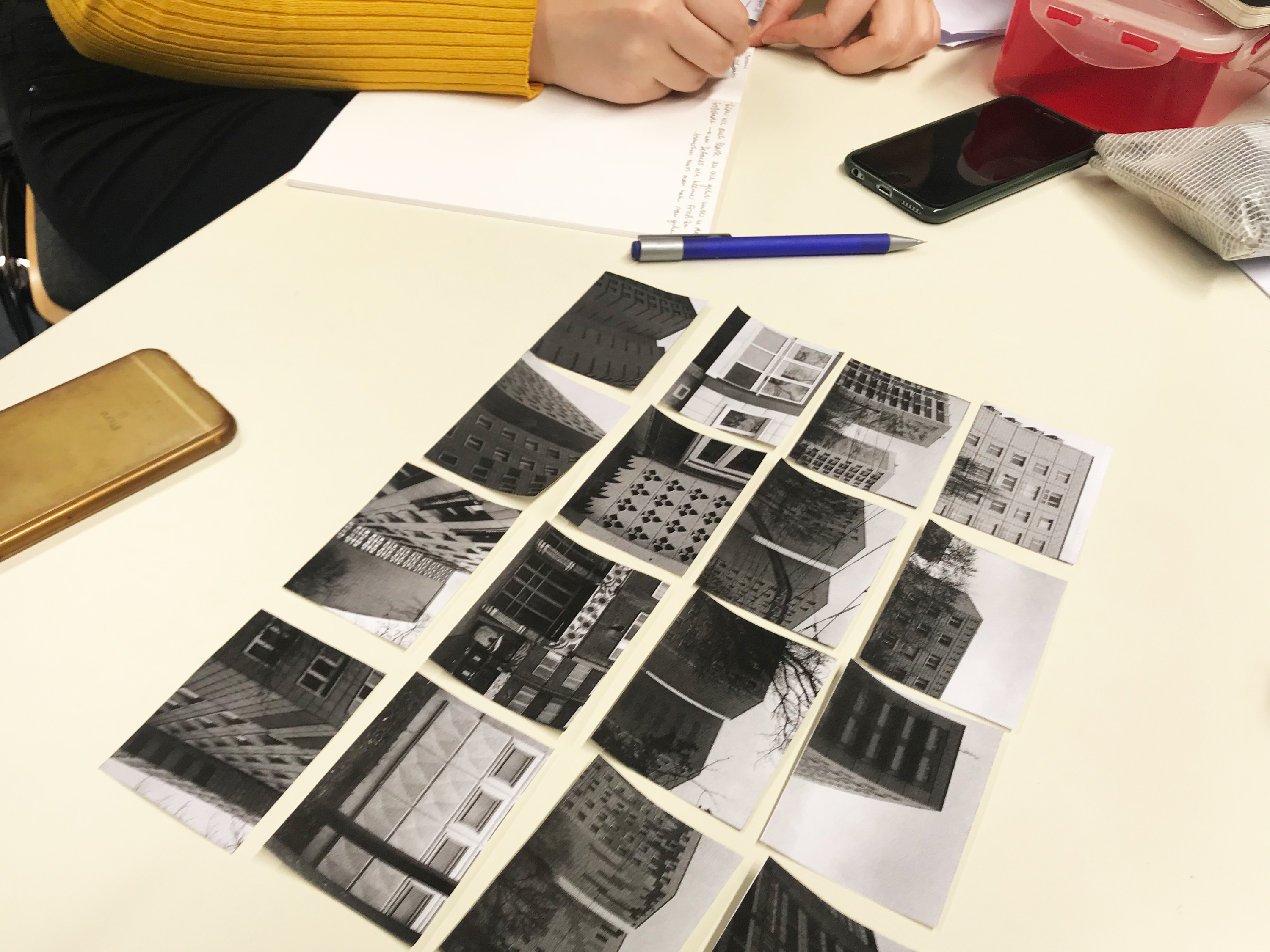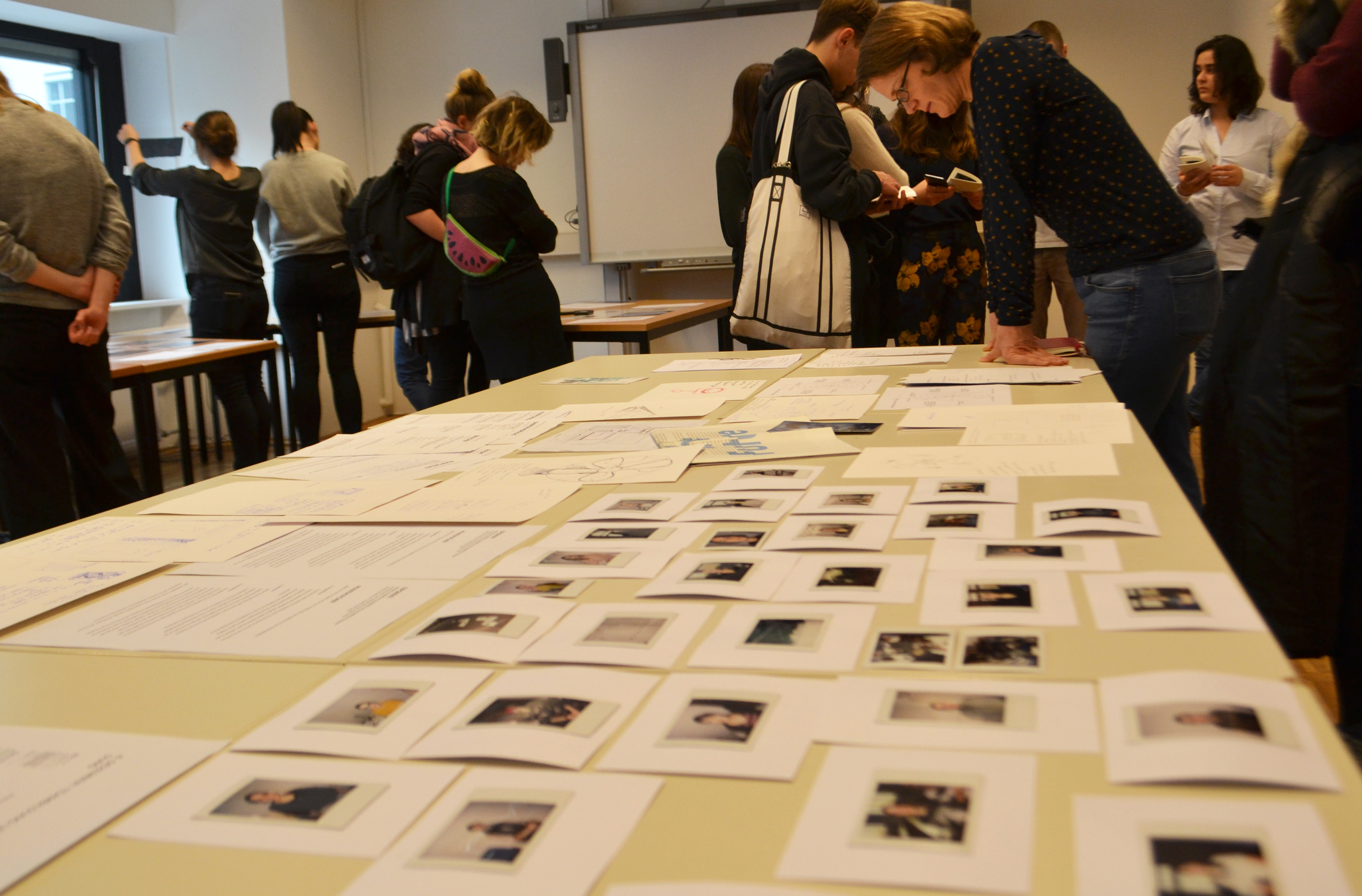EXPONERE! A practical seminar at the Technical University of Berlin and the Humboldt University of Berlin
Kerrin von Engelhardt (née Klinger)
26 August, 2024
Germany
The practical seminar EXPONERE! aimed at exploring three central methods of scientific exposition: collecting, photographing and exhibiting. The Latin term exponere has different meanings, which can be summarised in the German Universal Dictionary as follows: to place something in a spatial position that is exposed to attention or unprotected and particularly prominent; to present, explain and interpret something briefly as a prerequisite for further development; to expose something (photographically) (Duden, p. 565). The term served as a starting point, but also as a thematic bracket for the seminar.

The seminar group in the exhibition ‘Back to the Future - The 19th Century in the 21st Century’ at C/O Berlin © Franziska Ritter
An interdisciplinary seminar
The seminar was conceptualised by Franziska Ritter and Kerrin von Engelhardt. It took place in the Winter Semester 2018/19 as part of the program “Diversity of Knowledge Forms” at the Humboldt University of Berlin, as well as in the History of Science department at the Technische Universität Berlin. Twenty-five students from different bachelor’s and master’s programmes – Art and Visual History, European Ethnology, Global History, Asian and African Studies, Computer Science, British Studies, Culture and Technology/Art Studies, Cultural Studies, Urban and Human Geography, and Social Sciences – came together in an interdisciplinary learning group, varied in age and experience, curious about topics outside of their own curriculum.
Creating a sound theoretical basis
The first part of the seminar addressed the three methods of collecting, photographing and exposing within academic work, through theory and several excursions to archives and exhibitions, as well as encounters with experts.
Each subject was assigned a theory session and an excursion, to discuss terminology and address fundamental problems. Seminar discussion relied on fundamental texts on:
collecting and the relation between collecting and organising,
photographic work in scientific and museological contexts,
exhibition design.
The excursion to the Museum of Things Berlin opened the discussion on the first topic, collecting. At the showroom archive (Schaudepot), mediator Sophie Schulz answered questions about the terms “object” and “exhibit”, and about the (re)organisation of collections. We sketched “things”, studied their nature and understood collection strategies. Drawing floor plans and retracing visitor movements helped us gain understanding of the exhibition system. Basic principles of scientific collecting were discussed in an additional theory session.
For the second subject, photography, a visit to the Sudan Archaeological Collection and Archive at the Humboldt University of Berlin and a detailed introduction by Dr Cornelia Kleinitz, head of the collection, focused on scientific and non-scientific collection intentions, as well as the handling of photographic objects in collections in general. A seminar session by guest lecturers Matthias Gründig (Essen) and Anne Breimaier (Berlin) extended the discussion with a presentation of the photographic project “Hollis Frampton: ADSVMVS ABSVMVS, in memory of Hollis William Frampton”. The art historians reported on their courses with students from the Folkwang University of the Arts in Essen and the Free University of Berlin, and the subsequent student exhibition project. In their presentation and in the lively seminar discussion, the interweaving of historical and scenographic questions became clear.
Exhibiting, the third subject, opened on a theory session on questions of object and spatial staging. The exhibition “Back to the Future - The 19th Century in the 21st Century” at C/O Berlin first helped understand different professional fields and their interplay in the development of an exhibition (curator, scenographer, mediator, museum director, etc.). At the same time, the exhibition provided an ideal insight into the techniques, methods and processes of photography: works by contemporary artists come into dialogue with outstanding works by photography pioneers from the 19th century.
Using sketch sheets, questionnaires and floor plans, small teams analysed and discussed various exhibition aspects during the visit, such as curation and dramaturgy, the creative translation of themes and content into the space, the choice of materials, the use of colour and light and the visitor behaviour.
This first introductory part of the seminar provided important impetus for the individual, practical project work that followed.
Putting theory into practice
The second phase of the seminar was designed to experiment with the topics previously worked on theoretically. The aim was now to collect, photograph and exhibit. For this practical phase, the students formed five interdisciplinary teams of three to six members to work on the following tasks under the supervision of the lecturers:
Photographing: The teams were asked to produce or find at least 12 photographs on a self-chosen theme and determine which formal, technical and content-related aspects they wanted to take into account. The five teams took different approaches: they photographed collectively, rummaged through their own photo archives, photographed topics individually or drew on photo databases.
Collecting: the teams sifted through their photographic objects to define a question they could answer with their collection, use it to establish collection criteria and create an archive (e.g. database, card index, finding aid).
Exhibiting: the teams developed a curatorial concept for an exhibition of their collection with related questions, looked for a suitable location (fictitious or real) and developed creative approaches for staging the selected photographic objects in the space and visualised them in the form of sketches, collages, models or as mock-ups.
Regular feedback rounds, our “shoulder checks”, and short presentations of the working progress in the seminar group accelerated the creative process and provided necessary stimulating discussions. During the six weeks of practical work, each of the five projects developed an own approach to the theme of “EXPONERE!”. In the end, the students presented their results in a common prototype exhibition at the Humboldt University of Berlin.
Looking back: a success
The participants came up with strong statements in terms of aesthetics and content. The theory phase and the excursions enabled them to acquire the vocabulary and criteria to critically reflect on their own concepts and those of their fellow students. The high level of commitment and initiative shown by the students was pleasing: the interdisciplinary view beyond their own subject meant a broadening of horizons, but certainly a challenge too. Handling the practical issues of collecting, photographing and exhibiting (unfamiliar to the students), required an introductory theoretical basis and benefited greatly from the constant exchange within the team and in seminar discussions. This seminar has shown that problem-solving in a practical phase enables a more intensive understanding of theoretical issues and provides a greater sensitivity for interdisciplinary perspectives.

Impressions from the temporary exhibition of the student photo collection projects developed during the semester © Franziska Ritter

Impressions from the temporary exhibition of the student photo collection projects developed during the semester © Franziska Ritter
The students’ projects
(In)visible
Kseniia U., Raja S., Susan S., Marie Sophie H., Lucia Clara R.
“We can't see everything. From a purely physical point of view, the human eye is not able to observe a microscopic paramecium or recognise the patterned feathers of a distant bird. But our limited eyesight is not the only reason why so many things remain hidden from us. Invisible boundaries prevent us from seeing people who are different, situations that are unpleasant or feelings that don't make us happy. How do we make the invisible visible? Each student has artistically explored the invisible from a different perspective and attempted to overcome the boundaries of the visible through photographic technique. [...]”
Similis
Robin A., Rebecca G., Kasha G., Lia K., Sandra M. and Tabea P.
“Eyes and trees, skin and fruit, shoulders and rocks – in an age characterised by digitalisation and high technology, humans and nature seem to have little in common and are increasingly drifting apart. Under the programmatic title “Similis”, the project addresses this break and makes the correlations between man and nature, hidden at first glance, impressively visible – instantly. [...] The works presented show the viewer hidden analogies with an immediacy that challenges reflection on the problematic relationship between man and nature.”
‘Vanitas’ – Scientific Photographs as Phenomena of a / the (Global) Crisis Awareness?
Friederike T., Caroline K., Brenda M., Karl C., Philipp S.
“‘Vanitas’ examines the interfaces between art and science. The students deal with the harmful influence of humans on nature. The traces of mankind are expressed, for example, in microplastics in the sediment, which will still be detectable in several thousand years' time, even if planet Earth no longer allows human life. This decay is reflected in images from various disciplines of scientific photography, such as medicine or geographic remote sensing. The exhibition aims at documenting and reflecting on the extent to which the aesthetics of scientific photographs, not exclusively bleak and negative, are beneficial for a critical debate.”
“Schöne(re) Platte” – The Berlin prefabricated building and its diverse forms of design
Florentine O., Lea-Maria S., Alexandra K., Franziska S.
“What do you imagine when you think of prefabricated buildings in Berlin, both in the East and the West? A symbol of anonymous living in the big city? Of industrially produced apartment blocks that are characterised by barren simplicity, grey inconspicuousness and intimidating size? Contrary to these expectations, the students of the “Schöne(re) Platte” exhibition have created an archive that takes a closer look at the design diversity of Berlin's prefabricated apartment blocks.”
The big city in miniature – impressions of city life at the beginning of the 21st century!
Katharina S., Paul W. and Emily R.
“The project shows photographic objects from the ever-expanding collection, intended to give later generations the opportunity to visualise city life at the beginning of the 21st century. The combination of visual and acoustic stimuli enables visitors to immerse themselves in the situation.The striking juxtaposition of seemingly banal everyday situations in the long shot and the often surprisingly beautiful details in the close-ups invites viewers to reflect on their own perception of their surroundings. The acoustic soundtrack of the individual small series is mostly harmonious, but sometimes it also creates bizarre contrasts.”

Kerrin von Engelhardt (née Klinger)
Germany
Dr Kerrin von Engelhardt (née Klinger) studied fine arts at the Bauhaus University in Weimar and Cultural History/Folklore Studies, Art History and Philosophy at Friedrich-Schiller University Jena. She received her doctorate in the history of natural sciences with a dissertation on mathematics education around 1800.

Franziska Ritter
Germany
Franziska Ritter ist Szenografin und Musikerin. Sie studierte Architektur an der TU Berlin, sowie im Auslandsstudium Fotografie und Film an der University of North London. Sie war von 2008 bis 2014 wissenschaftliche Mitarbeiterin und ist seitdem Koordinatorin und Dozentin des Masterstudiengangs Bühnenbild_Szenischer Raum der TU Berlin.

